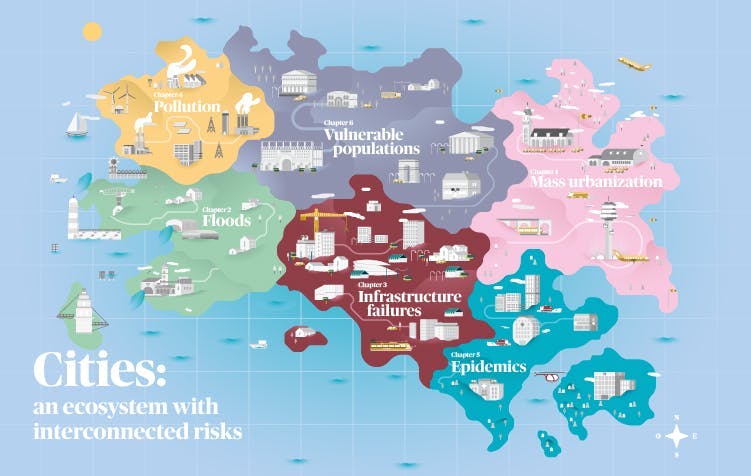
July 13, 2017
How research helps build more resilient cities
Faced with rising pollution, flooding, epidemics and other risks of natural and manmade disasters, researchers around the world are working hard to make cities more resilient. How are they going about it? What results have they achieved? As the 9th World Urban Forum explores this topic in Malaysia, let’s take a look at the current state of research supported by the AXA Research Fund.
1 minute
Original content: AXA Research Fund
More than half of the world’s population now lives in urban areas. By 2050, this proportion will climb to 70%. Increasing the density of the world’s cities will bring about a range of new issues – such as worsening pollution – which will come on top of existing natural disaster risks such as earthquakes and floods.
Related content

AXA launches new climate change actions
read moreBut that is no reason to throw up our hands in resignation: there are many ways to help cities organize their future and protect their inhabitants. First, that means expanding our understanding of risks so that we can better prepare for them. Next, we need to continue raising awareness about resilience so that populations, governments and businesses can make the right decisions in light of all pertinent information. Finally, we need to share our research results to help governments, decision-makers and civil society to craft appropriate solutions.

For all these reasons, the AXA Research Fund, which has supported research since 2007 by funding researchers worldwide, decided to publish its Resilient Cities Guide. The publication’s goal is to inform a wide audience about the current state of scientific knowledge concerning resilient cities.
At AXA, our actions are guided by one core belief: that to build more resilient cities, we need to have a firm grasp on the full spectrum of risks and how they are interconnected. As explained by Jad Ariss, Head of Public Affairs & Corporate Responsibility of the AXA Group, and member of the Scientific Board of the AXA Research Fund, research is key to effectively tackle the global challenges facing our societies. Scientists are central to the production of knowledge that is essential for the design and implementation of successful prevention and mitigation strategies. That’s why we are supporting around twenty best-in-class researchers working on this topic through the AXA Research Fund.
Take a look at the topics discussed in the guide:
Want to discover the leading researchers and research projects in the field of resilience? Want to learn more about the various initiatives in place around the world?



